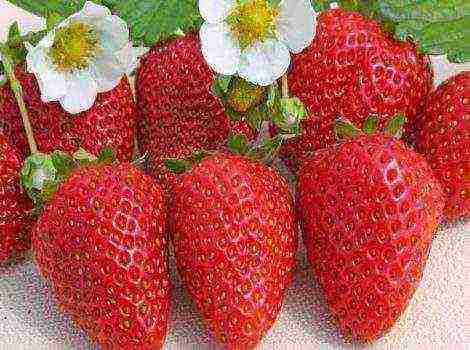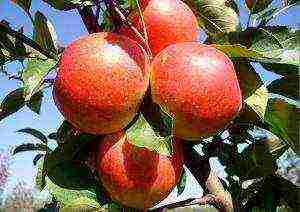Content
Rye, like wheat, is classified as a grain crop, although the flour from the grain of this plant is slightly inferior in quality to the indicated analogue. Rye seeds also have other uses - they are excellent feed for livestock, raw materials for the manufacture of malt and starch. They are also used for distillation into alcohol. The culture in question is undemanding to climatic conditions, tolerates winter well, therefore some varieties of rye can be found where there is no way to grow wheat. The maximum yield of rye can be obtained on fertile, well-planted organic lands. We will talk about the features of some varieties of this culture in our article.
Relay of Tatarstan
The variety in question was bred by breeders of the Republic of Tatarstan through a complex cyclical selection from 17 similar crops. It is a diploid plant with a prismatic long spike of a loose structure. The spikes are long, but brittle. As tests show, the Relay of Kazakhstan resists well such diseases as powdery mildew, inaccessible to brown rust. The grain is large enough, up to 40 grams per 1000 pieces.
In terms of ripening, this is a medium late variety, since its growing season is within 330 days. Plants are tall, up to 125 centimeters, have strong stems, which increases resistance to lodging. The advantages of the variety are considered immunity to most diseases of cereal crops, high frost resistance.
Tatarskaya 1
The considered rye variety was obtained by the scientists of Tatarstan by selecting from 30 similar crops. The plant differs from its analogs by a loose prism-shaped ear. The awns of the culture are long, medium-sized yellow seeds weighing 30-35 grams per 1000 pieces. Tatar rye belongs to mid-season plants, since its growing season is within 320-330 days. The height of the culture is about 110 centimeters, the stems are strong, the winter hardiness is high. The variety has an average immunity against diseases such as powdery mildew, as well as brown rust, well resists all kinds of root rot and snow mold. Tatarskaya 1 gives good yields even on unsuitable soils, therefore it is used as a safety variety.
Rise 2
The winter rye variety was bred by domestic breeders for cultivation in the Non-Black Earth Zone. Its parental forms are Kharkovskaya 60 and Hybrid 2. The plant has a prismatic ear 8 to 10 centimeters long of sufficient density. The awns are rough, rather long. Elongated yellow grain with a grayish tint weighing 30-35 grams per 1000 pieces. The height of the crop is up to 1.5 meters, the yield is within 40-50 centners per hectare. The mid-ripening variety has a growing season of about 330 days. Winter hardiness is good, but immunity against major diseases is weak.
Relay race of Tatarstan. A medium-late variety of rye with a growing season of up to 340 days, medium-sized (average height is 110-125 cm), but it is characterized by a strong stem, which allows the plant to be resistant to lodging. The grain is large (the mass of 100 grains reaches 3.2-3.8 g), with high food quality, good baking characteristics, a high content of amino acids, protein and lysine, which makes this variety the most suitable for obtaining baby food and dietary food. The relay race of Tatarstan is very resistant to many types of diseases, including powdery mildew, brown and stem rust, snow mold, which makes it possible to grow crops in areas with a rather humid climate: the Middle Volga region, Tatarstan, the Central Black Earth Region.
Tatarskaya 1... A medium-late variety of rye with a growing season of up to 340 days, medium-sized (plant height reaches 115 cm), highly resistant to lodging, has good winter hardiness and frost resistance, is practically not affected by snow mold and root rot. However, the Tatarskaya 1 variety is not sufficiently resistant to powdery mildew, brown and stem rust, which limits its use for cultivation in regions with the spread of these types of diseases. Due to its increased resistance to snow mold and root rot, it is not afraid of excessive soil moisture during growth and maturation, it is suitable for cultivation on marginal soils with a low humus content, it is recommended for sowing as an insurance variety.
Saratovskaya 7. A mid-season rye variety with a growing season of up to 330 days. The plant is of medium height, the variety is characterized by high frost-resistant and drought-resistant characteristics, resistant to lodging, differs in the same plant height, which allows harvesting with maximum efficiency. The grain is large (the mass of 100 grains can reach 4 g), it has high baking characteristics, according to which it meets the standards of the 1st class. Rye of this variety is quite resistant to damage by snow mold, powdery mildew and brown rust, it is recommended for cultivation in the Middle and Lower Volga regions and neighboring regions.
Bezenchukskaya 87... One of the best mid-ripening varieties of rye with a growing season of up to 332 days, it is distinguished by high frost-resistant characteristics, which allows preserving up to 98% of seedlings by spring. Despite its high growth, reaching up to 125 cm, the variety is resistant to lodging, while it has a high potential for productivity. The grain is large, high-quality - the weight of 100 grains can reach 3.7 g. At the same time, the variety is quite resistant to low moisture content in the spring-summer period, but it can be affected by brown rust and powdery mildew. Recommended for cultivation in the Middle Volga region, Central Black Earth, Central and Volga-Vyatka regions, in the Urals.
Features of agricultural technology when growing winter rye
To obtain the maximum yield, rye seedlings require a whole range of agrotechnical measures aimed at introducing nutrients, preventing lodging of plants, and fighting pests and weeds.
The first spring activities for the care of crops consist in harrowing the fields, which allows you to level the topsoil, enrich it with moisture and oxygen, and thereby contributes to the germination of seeds and the rapid growth of new seedlings. Harrowing is carried out in early spring after the snow melts, when the topsoil dries out enough so as not to stick to the harrow tines. The loosening technology involves harrowing across the rows.
At the first stage of growth, seedlings need additional nitrogen fertilization, for this purpose any nitrogen fertilizer can be used, however, ammonium nitrate is considered the best option, which is applied by the root method either along the diagonal of the rows or across at the rate of 35-45 kg of nitrogen per hectare crops.
For their enhanced growth, the fields must be freed from weeds that can drown out insufficiently grown rye sprouts, for which the fields should be treated with herbicides (diallen, simazin, etc.) during the period from the beginning of tillering of rye sprouts to the beginning of tube formation. The consumption rate is indicated on the package. In case of severe weediness of the fields, initial processing should be carried out at the beginning of tillering of crops.
To combat common viral and fungal diseases of crops, various fungicides are used, such as tilt or fundazol; the use of retardants will help prevent lodging.When plants are damaged by agricultural pests, it is necessary to additionally treat the crops with herbicides; the processing time and the type of herbicides are selected depending on the type of pest.
Harvest
The peculiarity of winter rye is that if the harvest is not timely, the grain will crumble, which will lead to a significant loss of yield. Rye can be harvested in 2 ways: single-phase - in this case, the grain is harvested with a combine within 10 days after entering the phase of full ripeness when the grain moisture content is not higher than 20%, or two-phase - in this case, the grain is harvested in the wax ripeness phase with a moisture content not exceeding 40%.
When choosing the 2nd method of harvesting, rye is initially mowed with reapers and left to dry on the stubble, having previously been rolled into swaths. After 3-5 days, when the grain dries up, the rye is threshed. When choosing a two-phase cleaning, remember that you need to start it earlier than one-phase cleaning by about 10 days.
The choice of this or that method of harvesting depends on a number of factors: the ripeness of rye, the planned harvest time, weather conditions, the selected variety, the presence or absence of weeds, the degree of lodging of the grain. After harvesting, the straw must be removed from the field, and the land must be prepared for the next crops.
In former times, rye was the main grain crop in Europe. Today wheat has taken its role, while rye is content with the third place in terms of grain harvest, yielding even to barley. However, given its high endurance and adaptability to cold climates, it remains a fairly important agricultural plant for Russia.
The content of the article:
- Origin and distribution of rye
- The economic value of rye
- Rye varieties
- Problems and prospects of growing rye in Russia
- Rye cultivation technology
Origin and distribution of rye
Cultivated rye is an annual (biennial) herb of the Zlakov family. Along with wheat, it is an important grain crop in Europe and North America.
The history of the origin and cultivation of rye is controversial. It is believed to be derived from wild rye, which was a weed in wheat crops. As the economic characteristics of wheat improved, so did rye. However, there is an alternative point of view, according to which rye quickly acquired the status of an independent cereal crop, which was a confident competitor to wheat in the northern regions of Europe.

It is known for certain that, at least in the early Middle Ages, rye was already actively cultivated throughout the European continent. Moreover, it was this culture that was the main cereal, since heat-loving wheat gave smaller yields in the cold European climate. Black rye bread was the mainstay of the diet of Europeans, including the Eastern Slavs. On the contrary, white wheat bread was available only to the wealthy strata of the then society. In fact, the word bread in Russia originally referred specifically to rye bread, while speaking of wheat bread, the term "white bread" was necessarily used.
Another proof that rye was the main grain crop is our language. Regions where high yields of cereals are consistently harvested, we call the granary. In the Russian Empire, Ukraine was called the granary, in modern Russia - the Kuban and the Volga region. So the word "granary" is a derivative of "zhito", which in the Old Russian language meant "crops", or "bread" (which is in the field). And in modern Ukrainian, which is much closer to Old Russian than modern Russian, rye is rye.
The popularity of rye in Europe was due to its high frost resistance, which far surpassed the frost resistance of wheat. This was very important, since the death of the crop from frost meant hunger and death. This is why the poor peasants of the pre-industrial era preferred rye to wheat.
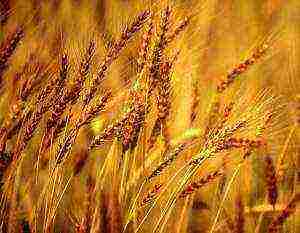
However, landowners, latifundists and other land barons of that time also preferred rye. This culture has always been the basis of the grain export of the Russian Empire. Wheat remained in secondary roles.
The importance of rye as the number one grain crop began to decline in the 19th century, and in the 20th century, wheat in Europe finally came out on top. This was due both to the emergence of more advanced wheat varieties capable of better enduring winter frosts, and to the development of global food trade and a general decline in the role of agriculture in the economies of European countries. Now, even in the event of a crop failure, famine did not threaten the Europeans, since grain could be bought in other regions of the world.
Also, the growth in popularity of wheat was influenced by purely psychological factors. Black rye bread had a strong reputation as a food for the poor, so as the European population grew in prosperity, people preferred to switch to the more "prestigious" white bread. By the way, in the USSR a massive transition of collective farms from rye to wheat took place in the 1940s and 1950s, when Stalin bluntly stated that Soviet people should eat white, not black bread.
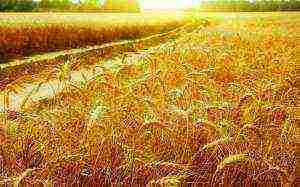
In the post-Soviet era, the sown area under rye in Russia continued to decline, but the reasons were already purely economic. Since the interest in wheat increased sharply in the 20th century, while rye fell, on the contrary, breeders have significantly increased the productivity of wheat varieties, while rye varieties have changed much less. As a result, it is much more profitable to grow wheat today than rye.
Nevertheless, Russia remains one of the three world leaders in rye production. Every year, from 2 to 3.5 million tons of rye grain are harvested in our country. Only Poland (about 3 million tons) and Germany (about 4 million tons) have comparable indicators. From 500 thousand tons to 1 million tons are also collected annually in Belarus, Ukraine and China.
The economic value of rye
Despite the crushing defeat in the struggle for the status of the main grain crop, rye still remains an important source of bread flour not only in Russia, but also in other European countries mentioned above. You can still buy black rye bread at any store or bakery. And although its market share is only about 10%, many Russians prefer it. For comparison, in the 1930s, 70% of the bread produced in the USSR was made from rye flour.
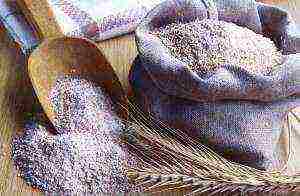
Before beer in Russia became the number one low-alcohol drink, this status was held by kvass. Moreover, most of the traditional recipes for kvass are based precisely on the use of rye bread.
Rye grain finds other uses in the food industry. For example, starch is obtained from it, and is also used as a raw material in the production of alcohol.
As a grain crop, rye is an excellent source of feed for farm animals. Rye grains can be used as forage, and young green stems can replace green livestock feed.
Finally, this is almost the best siderat culture. Every farmer knows that there is no simpler and cheaper way to suppress the development of weeds in a highly contaminated field (for example, plowed virgin soil) than to sow it with rye. Due to its rapid development, rye literally suppresses any weeds and diseases of cultivated plants. At the same time, it has a significant loosening effect on the soil, making it more permeable to water and air. This culture is very effective in the fight against many pests.

Rye varieties
Today on the territory of Russia more than 50 varieties are allowed for cultivation. The overwhelming majority of them are winter rye, which gives higher yields than spring rye.
Since this culture tolerates frosts well down to -35 degrees, there is practically no need for spring varieties. Hence their scarcity.Today, the cultivation of spring rye is practiced only in Central Siberia, Transbaikalia and Yakutia, where winters are so severe that even hardy winter rye freezes out.
Problems and prospects of growing rye in Russia
In 2016, Russian agricultural enterprises harvested more than 2.5 million tons of rye grain (against 2 million tons in 2015 and 3.3 million tons in 2014). The main producing regions are:
- Volga region. These are, first of all, the republics of Bashkiria and Tatarstan, each giving 20% of the all-Russian harvest.
- Orenburg region - about 10%.
- Saratov region - about 7%.
- Kirov region - 5%.
- Volgograd region - 5%.
As you can see, the Kuban and the North Caucasus practically do not grow rye. This is due to the fact that the natural and climatic conditions there allow growing much more productive and valuable agricultural crops, so farmers prefer not to waste energy and resources on rye, which is less profitable for them.
In general, by the beginning of the 21st century, rye production in Russia had significantly decreased even in comparison with Soviet times (in 1990, the rye harvest in the RSFSR amounted to 16.4 million tons). This is mainly due to the fact that the state is no longer involved in regulating the structure of crops, and the population does not show much interest in rye bread. As mentioned earlier, only about 10% of bread in Russia is rye bread. At the same time, the share of rye in the structure of grain crops is even lower - about 3%.
Experts assure that in the mid-term, there is no need to expect any breakthrough in the current situation. There is no reason to change the consumer sentiment of the population in the grain market. The second largest domestic consumer of rye, the alcohol industry, also shows interest in this crop only when prices for it are lower than for wheat.
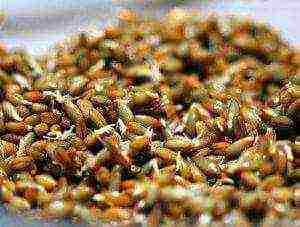
At the same time, the export potential of rye today is completely incomparable with the realities of the 19th century and earlier times. Rye grain is in much less demand than wheat. It is consumed mainly by Europeans, and in most cases they make do with their own harvest. With a worldwide harvest of about 14 million tons of rye, no more than 500 thousand tons are in international trade.
Thus, rye today is a niche crop, the low demand for which does not allow it to be grown on a large scale. In fact, the Russian harvest at the level of 2-3 million tons per year generally meets the needs of the market.
Rye cultivation technology
Since the demand for rye is relatively low, it makes sense to grow it for grain mainly in those regions where it is difficult to cultivate wheat and other more profitable crops. For example, rye is much more resistant to winter frosts and increased soil acidity.
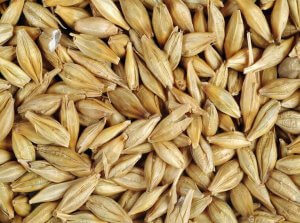
Due to the fact that this crop is an excellent green manure, it is recommended to sow rye seeds after perennial grasses, early varieties of vegetables, silage corn, fiber flax and other plants, after which there are many weeds. But perennial legumes are bad predecessors for it. In general, rye is less demanding on the place in the crop rotation and can be sown even after wheat.
Presowing cultivation of the land for rye is carried out by the semi-steam method. After collecting the predecessor, the field needs to be processed twice. It is recommended to subject the seed to processing in order to protect it from stem smut, root rot and snow mold. It is important to note that for sowing, grain from last year's harvest should be taken, since fresh grain has a low germination capacity.
When to sow winter rye, of course, depends on the climatic region:
- In the Non-Black Earth Region, it is sown in mid-August.
- In the Central Black Earth Region and in the southeastern regions - the entire second half of August.
- In the Kuban and the North Caucasus, rye is sown from the end of September to the beginning of the second decade of October.
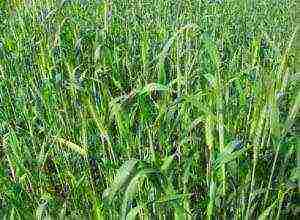
Seeding rates also vary by region:
- 5-6 million pcs. 1 hectare in the Central Black Earth Region;
- 6-7 million pcs. 1 hectare in the Non-Black Earth Region;
- 4-6 million pcs.1 hectare in the Volga region;
- 6-6.5 million pcs. per 1 hectare in Siberia and the Urals.
When sowing rye on a busy fallow, the seeding rate should be increased by 15–20%.
In order for rye seeds to germinate better, rolling is recommended. The need for this agrotechnical technique is especially great if the field is not sufficiently moistened. But on wet or heavy soil, rolling, on the contrary, is not permissible, since it will cause the formation of an excessively dense surface layer of soil, which will complicate the emergence of seedlings.
It is possible to increase the survival rate of seedlings in winter by applying fertilizers. Phosphorus-potassium mixtures give a particularly good effect. But the excess of nitrogen fertilizers at the initial stage of growth only reduces the resistance of rye to frost.
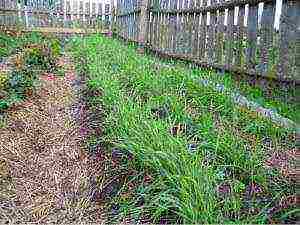
Long-term practice shows that carrying out snow retention measures has a beneficial effect on the yield of rye. Lack of snow cover reduces this figure by 4 centners per hectare or more.
In spring, it is recommended to carry out harrowing, which contributes to the destruction of the surface crust. Also, this event destroys weeds. Correct and timely harrowing also increases yields.
Although rye is quite a hardy crop, crops can suffer from various diseases and pests. For this reason, it is important to constantly monitor the state of crops and take timely action in case of problems.
Winter rye should be harvested 1-2 weeks earlier than wheat. If direct harvesting is used, then it is started when the grain is fully ripe. With two-phase harvesting, mowing is performed at the time of wax ripeness, and after a few days, threshing begins. Due to the fact that ripe rye crumbles very quickly, it is important to harvest as soon as possible.
Comrades farmers, today I would like to tell you about the main varieties of winter ryethat I met on my way and I know well. Winter rye varieties differ from each other with different properties. Reading on, you yourself will see this.
Winter rye varieties:
1) Rye variety Relay of Tatarstan
This lovely winter rye variety created in Tatarstan at the Tatar Research Institute of Agriculture. This variety is medium late, its growing season lasts about 321 - 340 days. The height is 110 - 125 cm, and the good thing is that the stem is strong, which increases resistance to strong winds. Still good baking qualities, resistant to lodging and high winter hardiness. And it is also very different from others with high resistance to leaf rust and powdery mildew, with medium resistance to snow mold and stem rust. The average weight of 1000 grains is 32 - 38 grams.
2) Rye varietyTatarskaya 1
Also a variety of winter rye created at the Tatar Research Institute of Agriculture. It is also a mid-season variety with a growing season of 316 - 340 days. Ripens almost at the same time with Bezenchukskiy 87. Height averages 100 - 115 cm. Also high lodging resistance and high winter hardiness. Good baking qualities. Medium resistant to stem and leaf rust and powdery mildew. The average weight of 1000 grains is 32 - 34 grams. This variety can be cultivated on marginal soils, as it has a high ecological plasticity.
3) Rye variety Saratovskaya 7.
This variety of winter rye Saratovskaya 7 was created in the South - Eastern Research Institute of Agriculture. Saratovskaya 7 is also one of the mid-season varieties of winter rye. the growing season is on average 305 - 330 days. High drought and winter hardiness. It is moderately affected by snow mold, brown rust and powdery mildew. Very high productivity potential of about 80 c / ha and even higher. It is very competitive in the Volga region and, of course, in other parts of our Russia.
4) Rye variety Bezenchukskaya 87
This variety of winter rye Bezenchukskaya 87 was created in the Samara Research Institute of Agriculture. It is also one of the mid-season varieties of winter rye, the growing season of which lasts 326 - 332 days. It is characterized by an average degree of adaptation to the natural conditions of the Middle Volga region.High winter hardiness. After winter, about 95 - 98% of plants survive. Also resistant to spring and summer drought. Powdery mildew and brown rust are moderately affected. The Bezenchukskaya 87 variety has a high productivity potential, so it can fully compete in the Ural, Central - Chernozem, Central, Volgl - Vyatsky, Middle Volga regions of Russia. And in these regions it is included in the State Register. Possesses with very high manufacturability and excellent baking properties. The mass of 1000 grains is 31 - 37 grams.
Dear farmers, one could still describe about other varieties of winter rye, for example, such as: crown, blizzard, memory of kondratenko, valdai, alpha, tatiana and others. I will tell you about them some other time.
